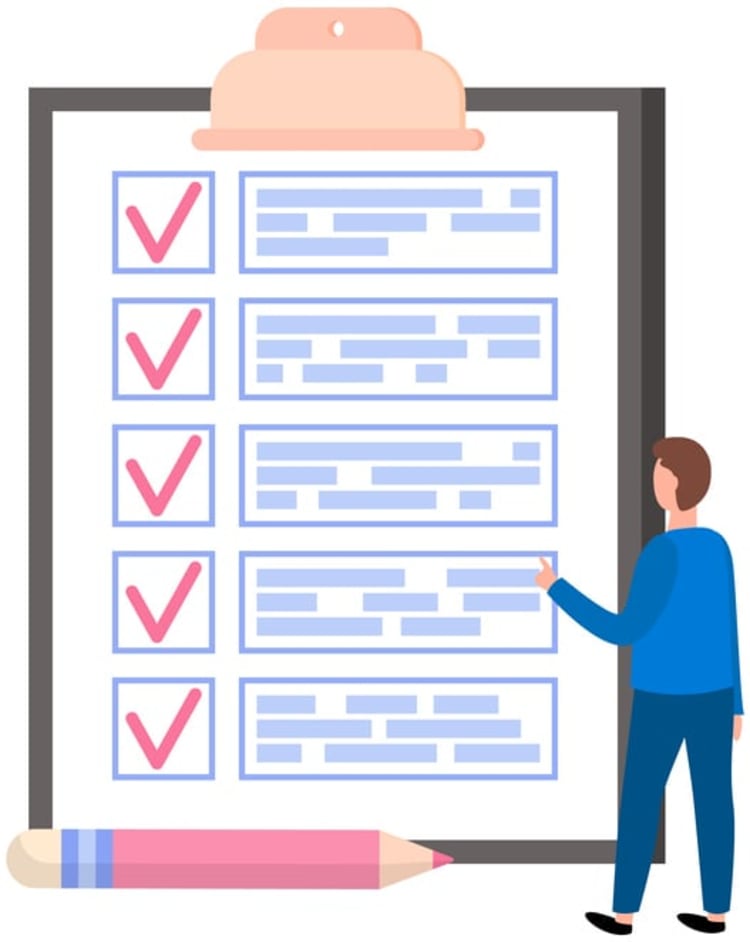Picture this: your organization’s meetings are well-attended, highly engaging, and consistently result in clear action items and improved productivity. Sounds too good to be true? It’s not - and the secret lies in mastering meeting takeaways. By honing this skill, you can transform your meetings into collaborative and goal-oriented events that drive success. In this blog post, we’ll dive deep into the world of meeting takeaways, offering valuable insights and practical tips to help you unlock their full potential.
Get ready to explore the power of meeting takeaways, learn how to craft effective agendas, boost participation and engagement, assign action items and responsibilities, leverage technology, evaluate meeting success, and tackle common meeting challenges. By the end, you’ll be equipped with the knowledge and tools necessary to elevate your meetings and achieve unparalleled results.
Key takeaways
- Unlock success with meeting takeaways by creating effective agendas, prioritizing topics, and assigning action items.
- Boost participation and engagement through encouraging questions, utilizing breakout sessions & interactive activities.
- Evaluate meeting success via participant feedback & metrics to ensure productive meetings with tangible results.
1. The power of meeting takeaways

Imagine walking out of a meeting with a clear understanding of the key decisions made, the important points discussed, and the specific tasks you need to complete. That’s the power of the key takeaway - they encourage attendees to stay focused, actively participate, and ensure that everyone is on the same page. Meeting takeaways are critical for optimizing productivity, encouraging collaboration, and guaranteeing accountability, which are essential components of a successful meeting.
Defining and following up on meeting takeaways ensures your follow up meetings yield valuable insights and tangible results. This process involves assigning specific tasks and responsibilities to individuals, establishing deadlines, and monitoring progress, ultimately leading to a successful meeting outcome.
So, how can you unlock the full potential of meeting takeaways? It all starts with crafting an effective meeting agenda.
Crafting effective meeting agendas

A well-crafted meeting agenda is the key to a focused and efficient meeting. Encouraging attendees to actively participate and ensuring a successful meeting outcome can be achieved by prioritizing topics, allocating timeframes, and sharing agendas in advance. A clear agenda also helps prevent wasted time spent on irrelevant discussions, allowing team members to concentrate on the desired outcomes and make key decisions.
Furthermore, assigning follow-up tasks and ensuring all participants are aware of their responsibilities becomes easier with a comprehensive agenda serving as a reference point.
The upcoming sections focus on the essential components of an effective meeting agenda: prioritizing topics, allocating timeframes, and sharing agendas in advance.
Prioritize topics
Prioritizing topics on your meeting agenda is crucial for maintaining focus and ensuring that the most important issues are addressed during the meeting. Here are some steps to help you prioritize topics effectively:
- Identify the goals and objectives of the meeting.
- Determine which topics align most closely with the goals and objectives.
- Consider the urgency and importance of each topic.
- Order the topics in a logical sequence that allows for smooth transitions and flow of discussion.
- Allocate appropriate time for each topic based on its importance and complexity. By following these steps, you can prioritize topics in a way that keeps the meeting on track and allows for meaningful contributions from all team members.
Effectively prioritizing topics requires considering the relative urgency and importance of each topic, as well as seeking input from participants. Taking into account dependencies and relationships between topics can also help create a well-structured agenda that leads to valuable insights and key takeaways.
Allocate timeframes
Allocating timeframes for each agenda item is essential for keeping discussions on track and ensuring that meetings don’t run overtime. Assigning specific timeframes for each topic aids in managing the conversation and guarantees each matter receives the necessary consideration. In order to allocate timeframes effectively, it’s important to estimate the amount of time needed for each topic based on its complexity and level of discussion required.
Setting realistic time limits for each topic also helps maintain the team’s momentum by providing a sense of urgency, which encourages participants to be succinct and articulate in their contributions. This allows for the continuous progression of the meeting and timely completion of tasks.
Share agendas in advance
Sharing agendas in advance allows participants to come to the meeting prepared and contribute meaningfully. By providing the agenda ahead of time, attendees can review the topics to be discussed, gather their thoughts and ideas, and ensure they are ready to actively participate in the meeting. This not only helps keep the meeting on track but also guarantees that every team member has an opportunity to contribute and share their insights.
Best practices for sharing meeting agendas in advance include:
- Sending them via email
- Using a shared document or project management tool
- Creating a calendar invitation
- Using a collaboration platform or messaging app
- Creating a shared folder or document for regular meetings
Sharing agendas in advance sets the stage for a productive, engaging, and successful meeting experience.
Boosting participation and engagement

One of the keys to a successful meeting is ensuring active participation and engagement from all attendees. Here are some strategies to achieve this:
- Encourage questions and create a safe space for attendees to ask for clarification or share their thoughts.
- Utilize breakout sessions to allow smaller groups to discuss specific topics or tasks, promoting active involvement and collaboration.
- Implement interactive activities such as brainstorming sessions, group discussions, or hands-on exercises to keep attendees engaged and encourage their participation. By creating a welcoming environment that fosters collaboration and increased productivity, you can ensure that all attendees actively contribute, providing valuable insights and key takeaways.
In the following subsections, we will explore specific strategies for boosting participation and engagement in meetings, including encouraging questions, utilizing breakout sessions, and implementing interactive activities. By employing these strategies, you can ensure that your meetings are not only productive but also enjoyable and engaging for all participants.
Encourage questions
Encouraging questions during meetings is crucial for promoting open communication and ensuring that any points of confusion or concerns are addressed. Fostering an environment where attendees feel comfortable asking questions ensures everyone actively listens, contributes to the discussion, and leaves the meeting with a clear understanding of the important points and key decisions made.
As a meeting facilitator or leader, it’s essential to create an atmosphere where attendees feel at ease asking questions and sharing their ideas. This can be achieved by setting a positive tone, being approachable, and actively engaging with participants. By encouraging questions, you can ensure that your meetings are not only informative but also collaborative and beneficial for all involved.
Utilize breakout sessions
Breakout sessions are an excellent tool for increasing participation and engagement during meetings. These smaller, focused discussions allow for more in-depth conversations on specific topics, providing an opportunity for attendees to:
- Collaborate
- Brainstorm ideas
- Problem-solve
- Share experiences
- Learn from each other
Designating a facilitator for each breakout session and providing clear guidelines ensures a productive conversation and an opportunity for everyone to contribute.
Incorporating breakout sessions into your meetings offers several benefits:
- Boosts engagement
- Promotes a sense of camaraderie and teamwork among participants
- Ensures that your meetings are dynamic and interactive
- Yields valuable insights and actionable steps for your organization.
Implement interactive activities
Interactive activities, such as brainstorming sessions, role-playing exercises, or problem-solving challenges, can foster collaboration and engagement during meetings. These activities not only help to break up the monotony of traditional meetings but also encourage attendees to think creatively and work together to achieve common goals.
When selecting interactive activities for your meetings, consider the specific goals and objectives of the meeting, as well as the interests and skill sets of the participants. Incorporating engaging and relevant activities ensures that your meetings are not only productive but also enjoyable and memorable for all involved.
Assigning action items and responsibilities
Assigning action items and responsibilities is a crucial component of effective meetings. Defining specific tasks, establishing deadlines, and monitoring progress ensures accountability and follow-through, ultimately leading to successful outcomes. Assigning action items involves clearly communicating expectations, providing the necessary resources and support, and holding individuals accountable for their assigned tasks.
In the following subsections, we will discuss the importance of defining specific tasks, establishing deadlines, and monitoring progress in order to ensure accountability and successful completion of action items. By mastering these aspects of meeting management, you can guarantee that your meetings result in tangible results and improved collaboration.
Define specific tasks

Defining clear objectives is essential for clarifying expectations and responsibilities for each team member. By using specific and measurable language to articulate what needs to be done, by whom, and by when, you can avoid confusion and ensure that everyone is on the same page regarding their assigned tasks. This clear communication helps to guarantee that the meeting yields valuable insights and actionable steps for your organization.
To effectively define specific tasks, it’s important to consider the goals and objectives of the meeting, as well as the skills and expertise of the team members involved. By assigning tasks based on individual strengths and areas of expertise, you can ensure that each action item is completed efficiently and effectively, leading to successful outcomes and increased productivity.
Establish deadlines

Establishing deadlines is crucial for ensuring that tasks are completed in a timely manner and that progress is tracked effectively. By setting realistic time limits for each action item, you can maintain a sense of urgency and encourage attendees to work efficiently and effectively towards their goals.
In addition, deadlines help to keep team members accountable and ensure that everyone is aware of the expected outcomes for each task. When setting deadlines, it’s important to consider factors such as the workload of the individuals involved, any dependencies on other tasks, and the overall timeline of the project.
Establishing clear deadlines and communicating them to all team members ensures timely completion of tasks and improved collaboration.
Monitor progress
Monitoring progress is essential for ensuring that action items are completed on schedule and that all parties are held responsible for their work. Regularly following up on the status of action items and tracking progress provides support and guidance when needed, ensuring tasks are completed on time and any challenges or obstacles are addressed promptly.
Effective progress monitoring involves gathering data on task completion, analyzing trends and patterns, and making adjustments as needed to ensure that goals are met. Employing these strategies ensures that your meetings result in successful outcomes and continuous improvement for your organization.
Leveraging technology for enhanced meetings
In today’s fast-paced business environment, leveraging technology is essential for enhancing communication, collaboration, and productivity in meetings. Utilizing video conferencing tools, project management software, and other collaboration platforms creates a more engaging and efficient meeting experience for all attendees.
Technology not only improves the overall meeting experience but also helps to streamline the process of assigning action items, tracking progress, and following up on tasks.
Whether you’re connecting with remote team members, sharing documents and resources, or brainstorming ideas in real-time, technology can play a pivotal role in transforming your meetings. Embracing the latest tools and technologies ensures your meetings are not only productive but also enjoyable and engaging experiences for all involved.
Integrating Kumospace for enhanced virtual interactions
Elevate your digital meetings with Kumospace, an innovative virtual platform designed to simulate real-world interactions through spatial technology. Kumospace allows participants to navigate within a virtual environment, engage in dynamic conversations, and effortlessly network, much like in a physical setting. By implementing Kumospace in your meeting strategies, you enhance engagement and foster genuine connections among remote teams, ensuring your meeting takeaways resonate and drive actionable results.
Evaluating meeting success

Evaluating meeting success is crucial for ensuring that your meetings remain beneficial and advantageous for all attendees. By gathering participant feedback, analyzing meeting metrics, and adapting and improving processes for future meetings, you can continuously refine your meeting strategies and achieve more effective results.
In the following subsections, we will discuss specific methods for evaluating meeting success, including gathering participant feedback, analyzing meeting metrics, and adapting and improving processes. By employing these strategies, you can ensure that your meetings are not only productive but also contribute to the continuous improvement and growth of your organization.
Gather participant feedback

Gathering participant feedback is a valuable tool for evaluating the effectiveness of your meetings and identifying areas for improvement. Collecting feedback through anonymous surveys, direct one-on-one discussions, or group debriefing sessions provides insights into the success of the meeting and allows for any necessary adjustments for future meetings.
By carefully evaluating feedback, searching for patterns or recurring topics in the responses, and implementing suggested improvements, you can ensure that your meetings remain productive and valuable for all involved. Additionally, sending a follow up email can help reinforce the discussed points and maintain open communication.
By continuously refining your meeting processes based on feedback, you can create a more engaging and effective meeting experience for your team members.
Analyze meeting metrics
Analyzing meeting metrics is essential for identifying trends and areas for improvement in your meetings. By examining metrics such as:
- Attendance rate
- Meeting duration
- Participant engagement
- Action items completed
- Meeting outcomes
You can gain valuable insights into the effectiveness of your meetings and make informed decisions about future meeting processes.
Collecting data through various methods can help you track and analyze meeting metrics. Some ways to collect data include:
- Surveys
- Feedback forms
- Meeting minutes
- Meeting management software
With this information, you can adjust your meeting strategies as needed, ensuring that your meetings remain productive, engaging, and beneficial for all attendees.
Adapt and improve
Adapting and improving meeting processes based on feedback and analysis is essential for achieving continuous improvement and more successful meetings in the future. By identifying areas of weakness and implementing appropriate adjustments, you can ensure that your meetings continue to evolve and become more effective over time.
By reflecting on your meeting dynamics, soliciting feedback, leveraging technology, and being open to change, you can create a more engaging and productive meeting environment. Continuous improvement is crucial for the ongoing success of your meetings and the overall growth of your organization.
Common meeting challenges and solutions
We’ve all experienced common meeting challenges, such as lack of focus, low engagement, and poor time management. By employing the strategies we’ve discussed in this blog post, such as effective agenda planning, active participation strategies, and leveraging technology, you can address these challenges and transform your meetings into productive and engaging events.
Remember, the key to successful meetings lies in mastering the following strategies for your next meeting:
- Meeting takeaways
- Crafting effective agendas
- Boosting participation
- Assigning action items
- Leveraging technology
- Evaluating success
Implementing these strategies ensures that your meetings consistently yield valuable insights, actionable steps, and tangible results for your organization.
Summary
Throughout this blog post, we’ve explored the importance of meeting takeaways and provided practical tips for mastering them. By crafting effective agendas, boosting participation and engagement, assigning action items and responsibilities, leveraging technology, and evaluating meeting success, you can transform your meetings into successful, collaborative, and goal-oriented events.
It’s time to unlock the power of meeting takeaways and elevate your meetings to new heights. With the strategies and insights provided in this blog post, you’re well-equipped to drive productivity, foster collaboration, and ensure accountability in your meetings, ultimately leading to the success and growth of your organization.
FAQs
Takeaways are main messages or pieces of information that are learned from something, like a meeting, discussion, or conference. These takeaways can be conclusions, impressions, action points, or even just important facts such as email addresses, phone numbers, dates, and times. Taking away the key learnings from an experience is an essential part of growth and development.
The biggest takeaway from the meeting is that attendees should have information on relevant topics, meet new people, discover ways to get involved, stay connected with the team and its progress, learn about new ideas and concepts, and get the answers they need to move forward. In addition, key takeaways can help the team recap the important points discussed in the meeting as well as set actionable items for follow-up.
Present takeaways by reiterating them multiple times throughout the presentation to ensure they are understood and remembered. Make sure the takeaway is clear and concise, and use professional language to make a connection with your audience.
Meeting takeaways are key points and action items that participants should remember or implement after the meeting. These takeaways should be clear and concise, and should be communicated to all participants after the meeting.
Prioritize topics, allocate timeframes, and share agendas in advance to create an effective meeting agenda. This will help ensure that everyone is on the same page and that the meeting is productive.





